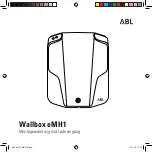
If the power steering system breaks down (or if the engine is turned
off), you can steer the vehicle manually, but it takes more effort. If the
steering wanders or pulls, check for:
•
an improperly inflated tire
•
uneven tire wear
•
loose or worn suspension components
•
loose or worn steering components
•
improper steering alignment
PREPARING TO DRIVE YOUR VEHICLE
Your vehicle has special design and equipment features to make it
capable of performing in a wide variety of circumstances. These special
design features, such as larger tires and increased ground clearance, give
the vehicle a higher center of gravity than a passenger car.
WARNING: Utility vehicles have a significantly higher rollover
rate than other types of vehicles. Vehicles with a higher center
of gravity such as utility and four-wheel drive vehicles handle
differently than vehicles with a lower center of gravity. Utility
and four-wheel drive vehicles are not designed for cornering at
speeds as high as passenger cars any more than low-slung sports
cars are designed to perform satisfactorily under off-road
conditions. Avoid sharp turns, excessive speed and abrupt
maneuvers in these vehicles. Failure to drive cautiously could
result in an increased risk of loss of vehicle control, vehicle
rollover, personal injury and death.
WARNING: In a rollover crash, an unbelted person is
significantly more likely to die than a person wearing a seat
belt.
WARNING: Loaded vehicles, with a higher center of gravity,
may handle differently than unloaded vehicles. Extra
precautions, such as slower speeds and increased stopping
distance, should be taken when driving a heavily loaded vehicle.
Your vehicle has the capability to haul more cargo and people than most
passenger cars. Depending upon the type and placement of the load,
hauling people and cargo may raise the center of gravity of the vehicle.
2005 Mazda Tribute
(j14)
Owners Guide (post-2002-fmt)
USA English
(fus)
Driving
122
















































